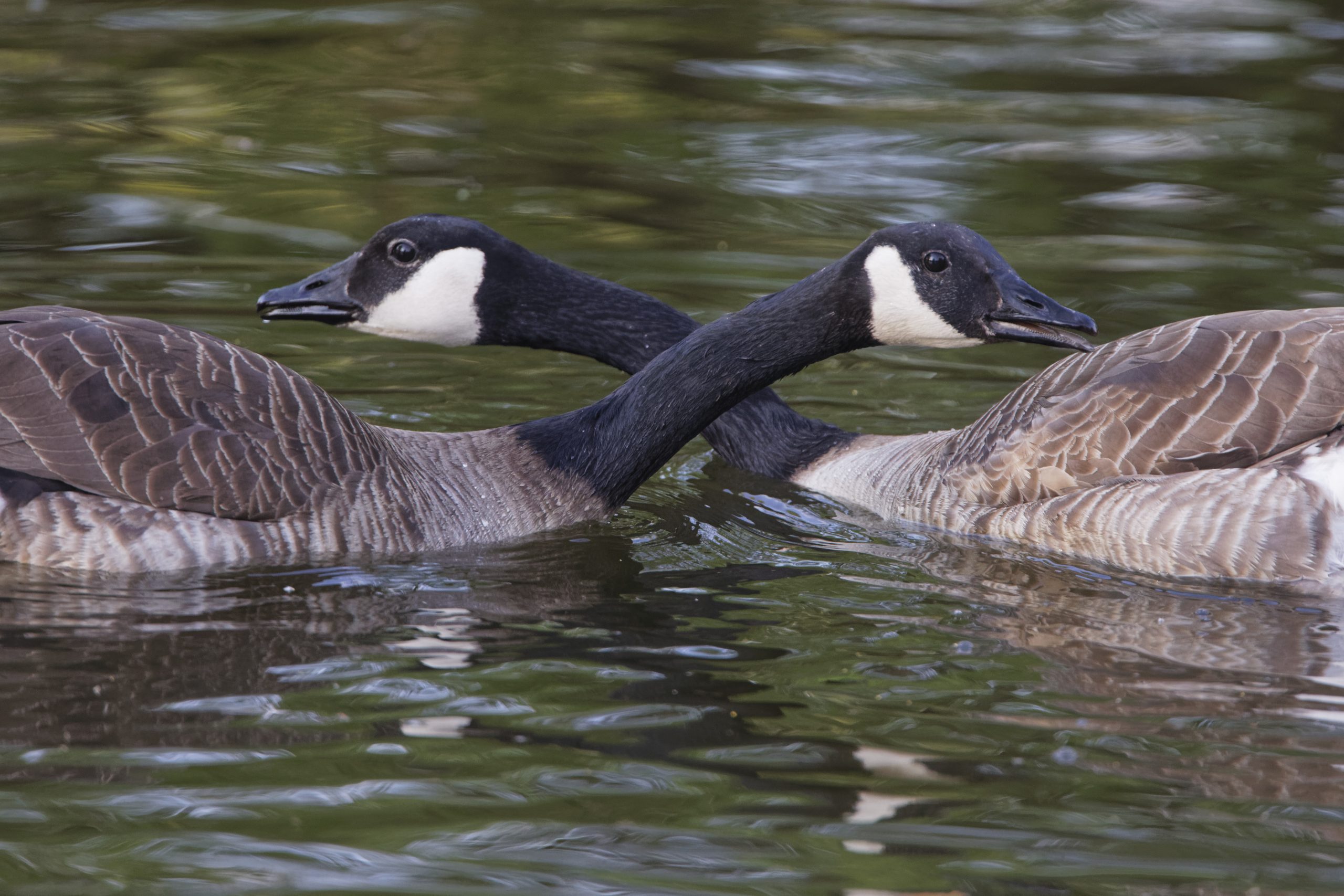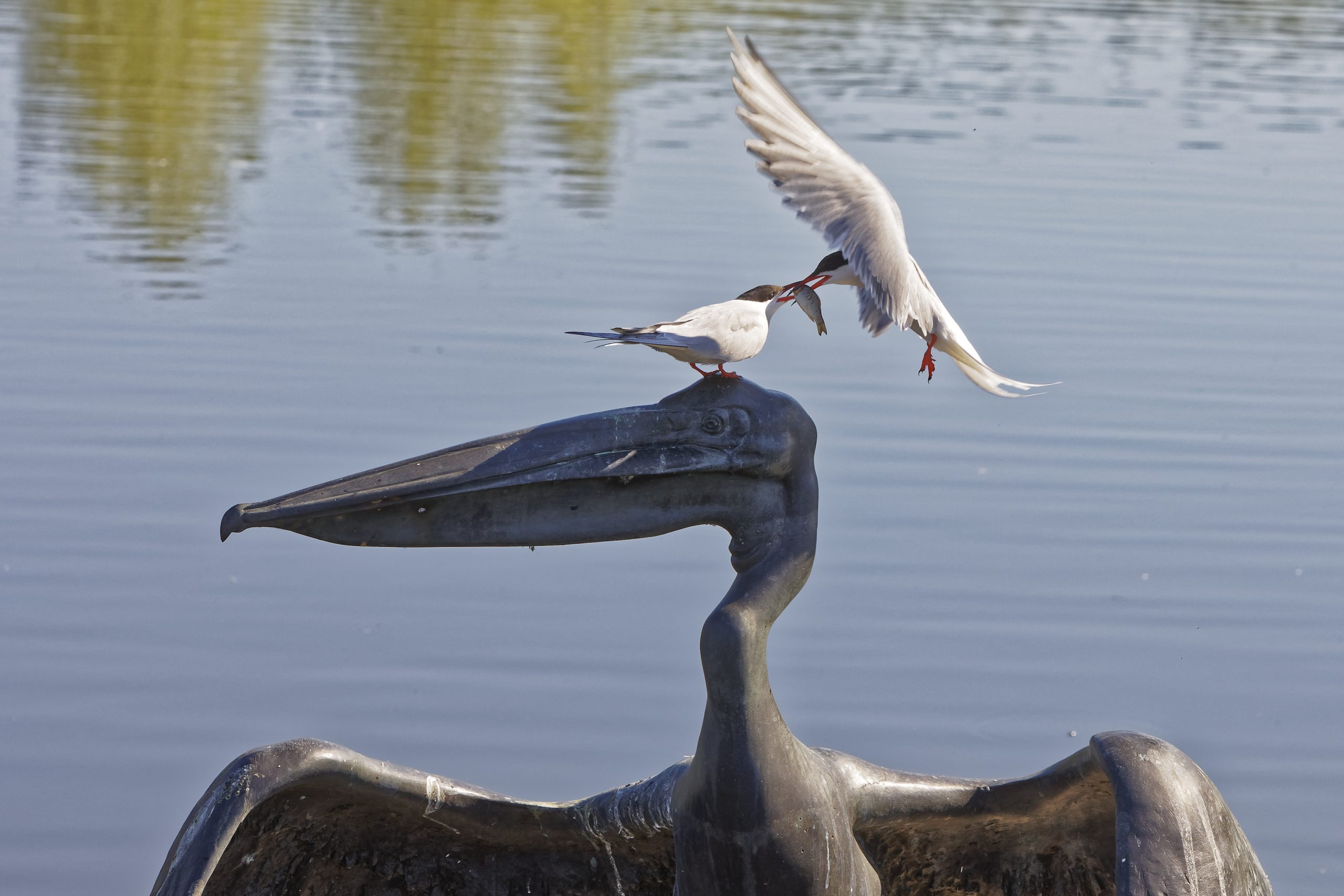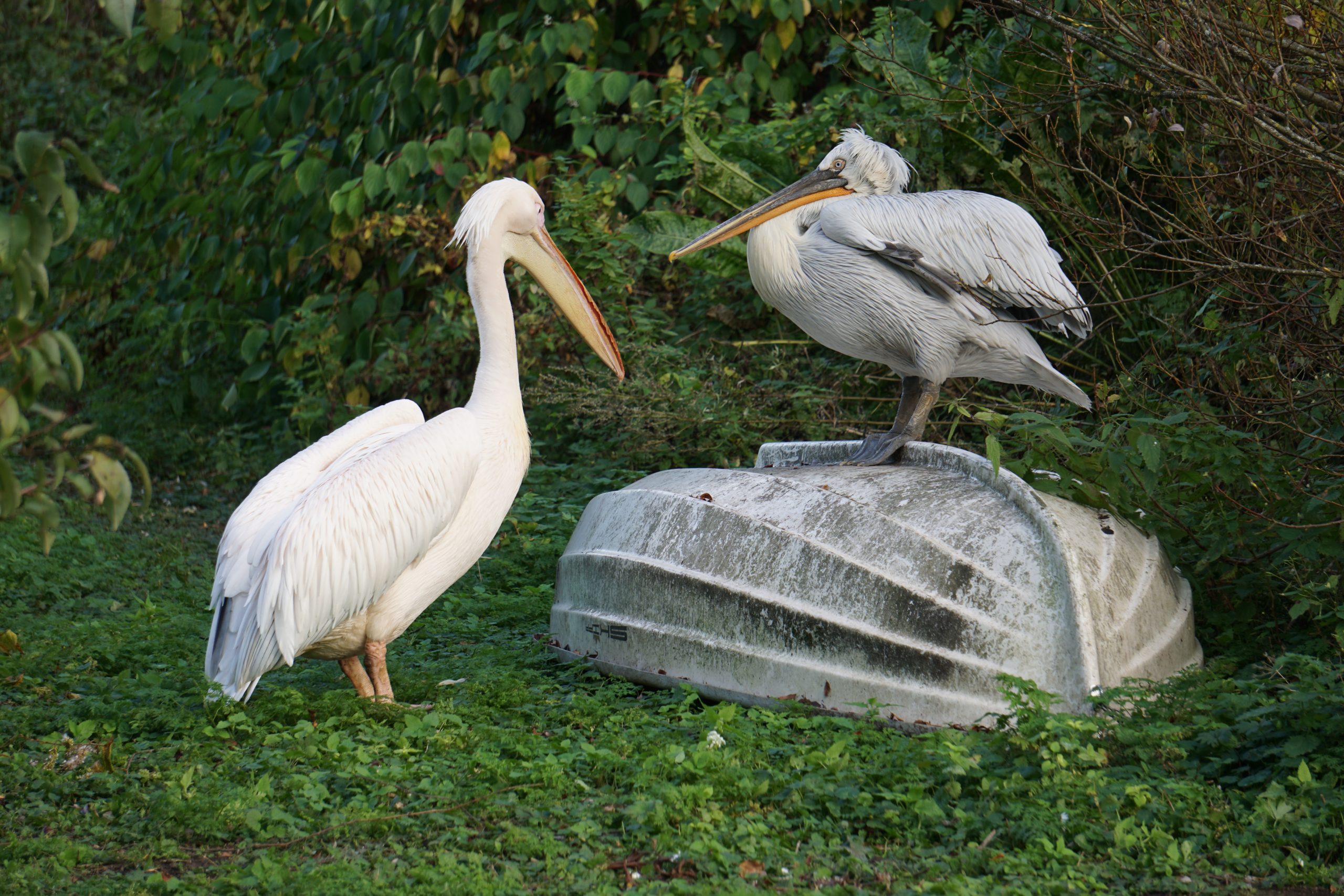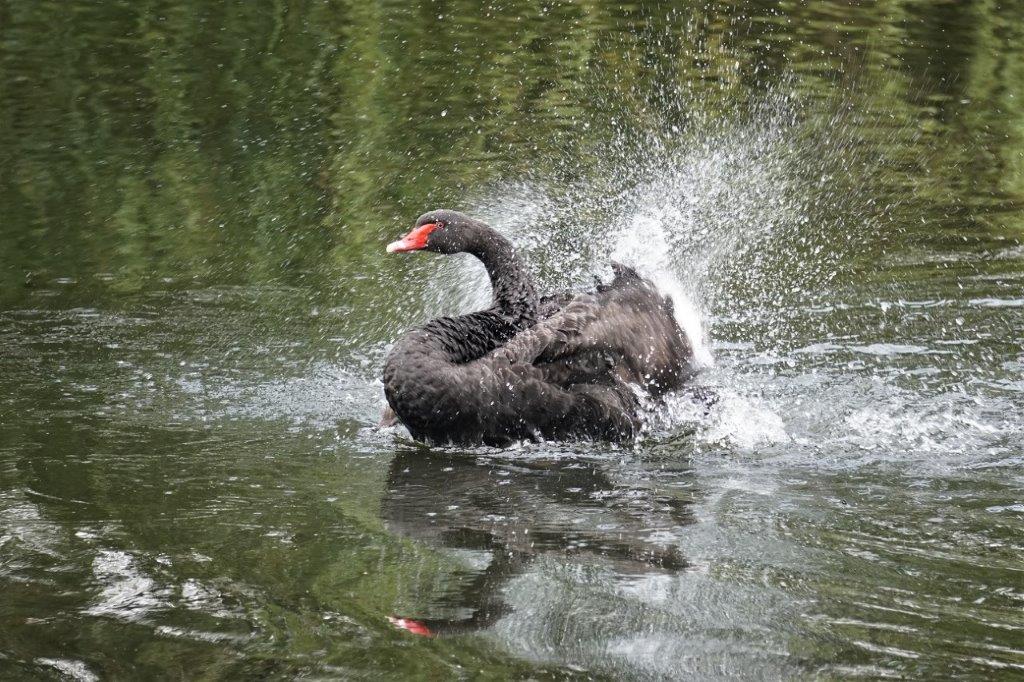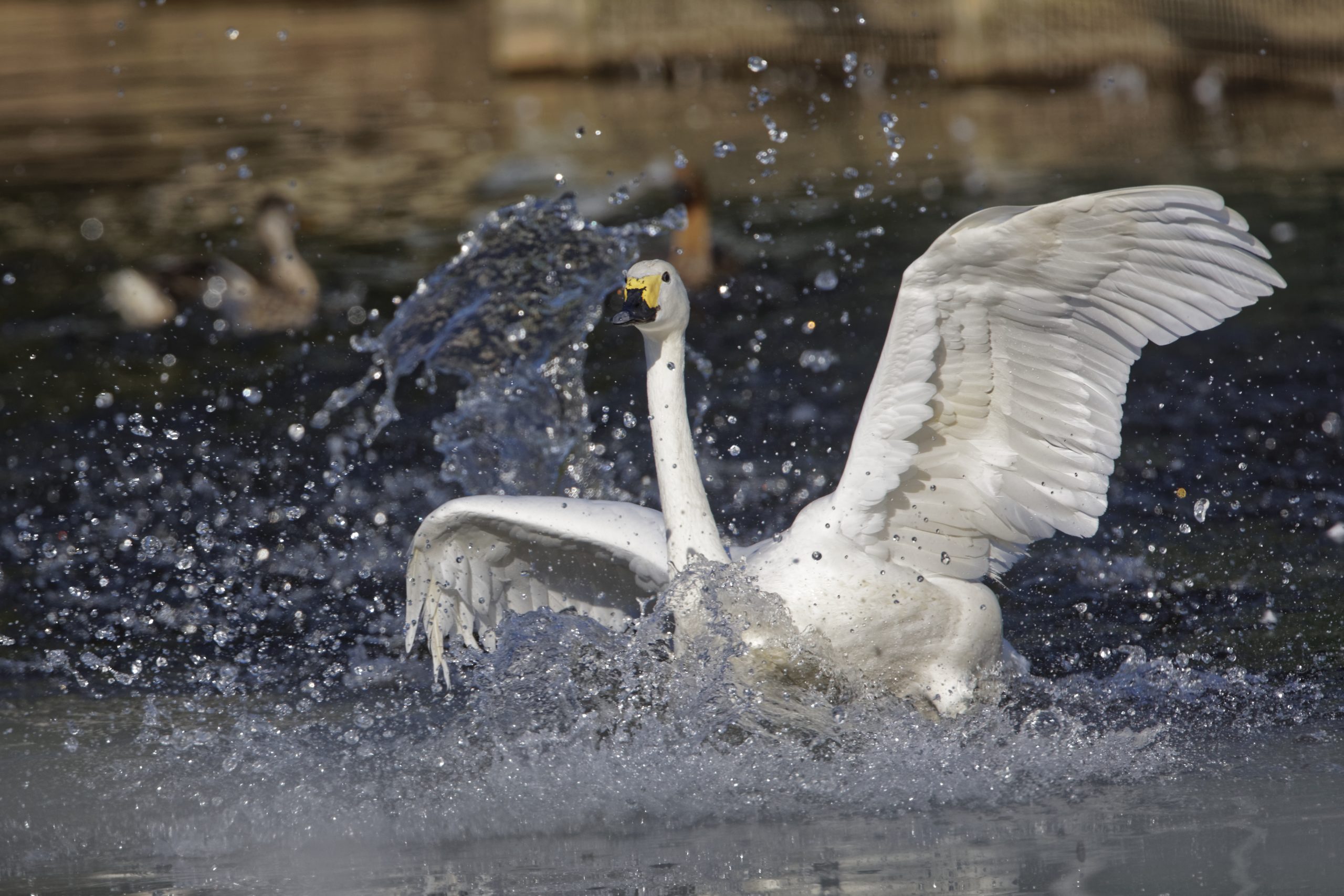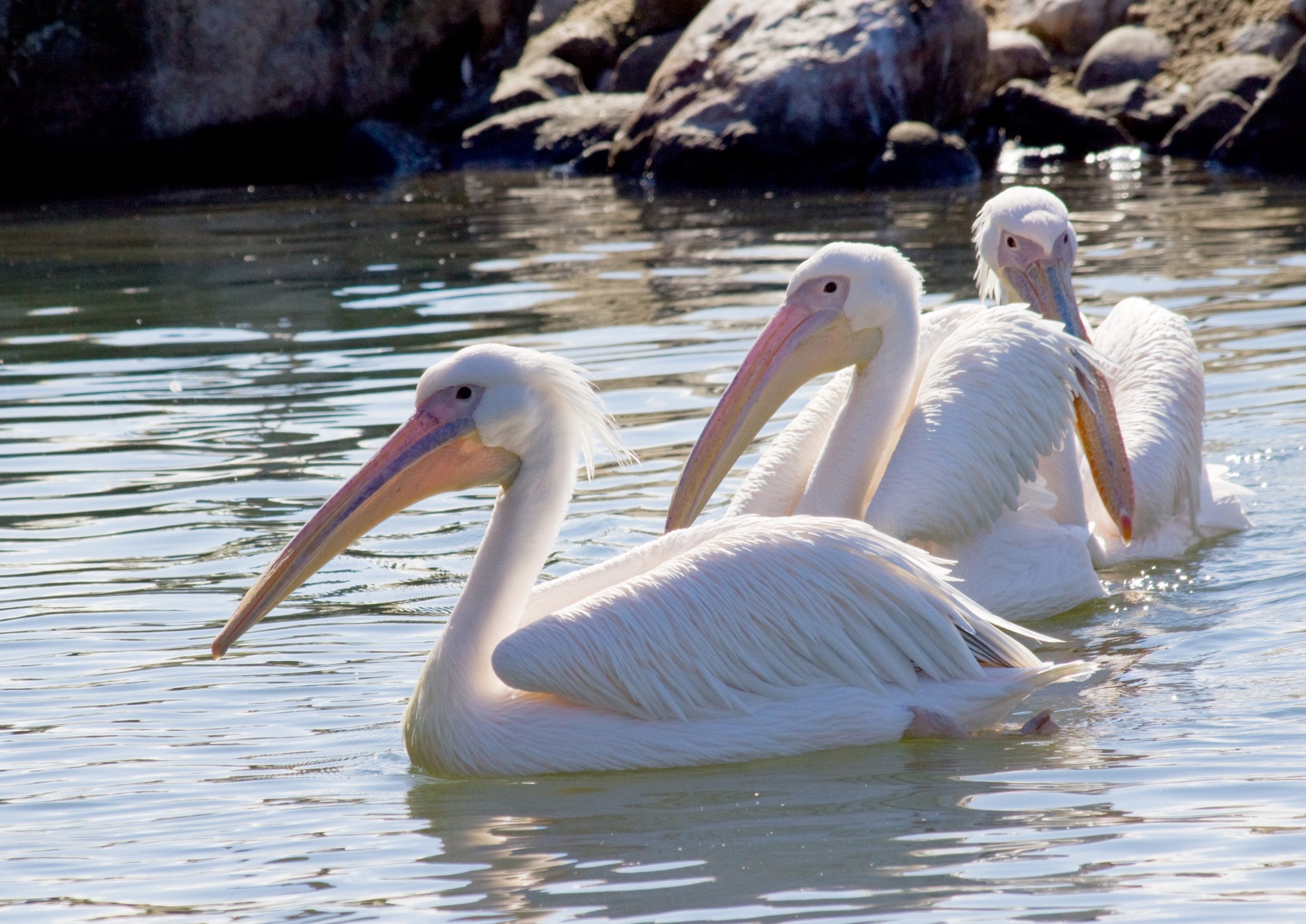The Zoo’s six ponds with islands and one large peninsula are home to our pelicans and numerous ducks to the delight of waterfowl enthusiasts.
A particularly lively and loud life breaks out in the bird ponds in the spring when the permanent inhabitants are allowed out of their winter apartments to gallivant on the meadow and choose nesting places. Free-living bird species that feel safe here will also arrive during the breeding season, and mute swans, cormorants, gray herons, red-necked phalaropes, and northern shovelers will also make migratory stops in the bird ponds.
Walking along the boardwalk across the ponds is especially fun in the summer for cooling off. The attentive spectator can then see the bird parents taking care of their chicks and admire the large carp floating and splashing near the water surface. If you are particularly lucky, you can see a rare guest, a freely living European pond turtle in action On the shoreside meadow walks the largest and most graceful bird in Estonian nature – the Eurasian crane. On the other side of the water mirrors, is a platform overlooking the active life of the inhabitants of the southern hemisphere, such as black swans, ruddy shelducks, and the great white pelican. The latter is especially beautiful in autumn when the plumage of the birds performing the mating display turns beautifully pink-orange.
If the cold-sensitive birds are taken indoors before the winter, and the free-living migratory birds have also moved to the south, you will certainly meet the unpretentious and frugal Kihnu native sheep living in the open air on the meadows of bird ponds around the clock also in the winter.
